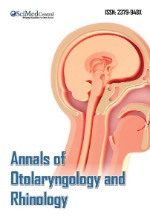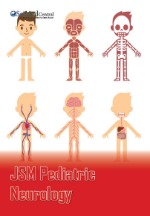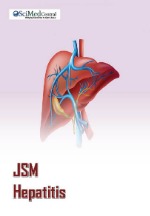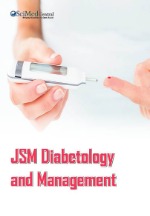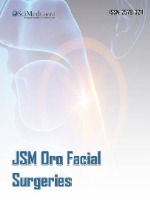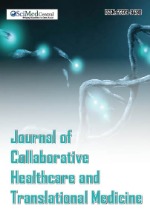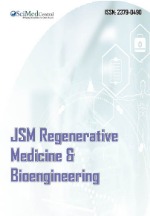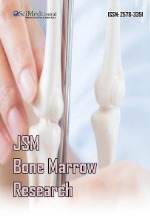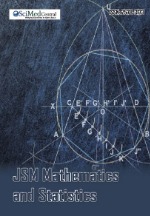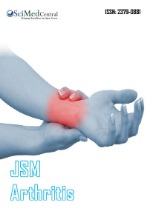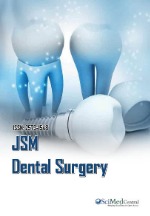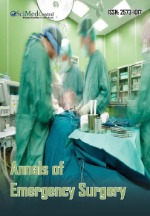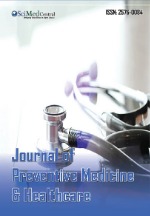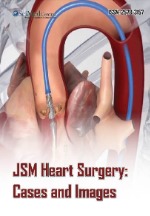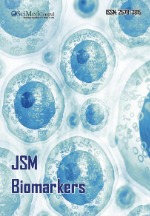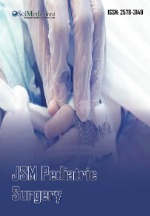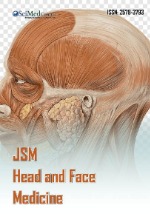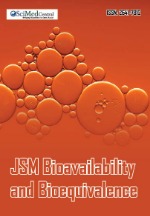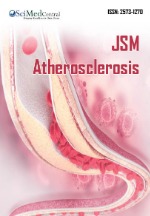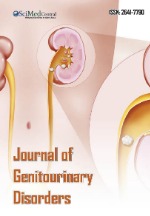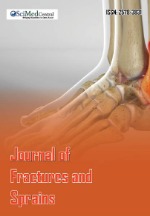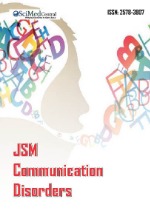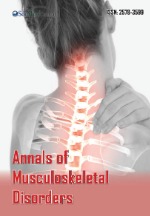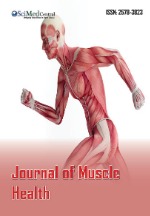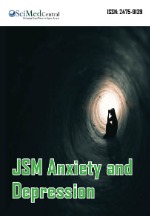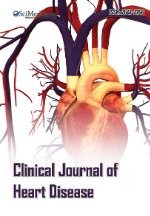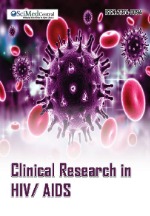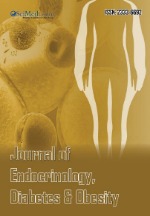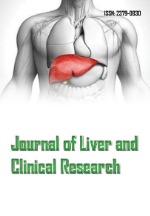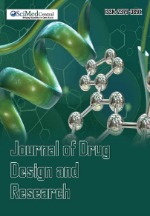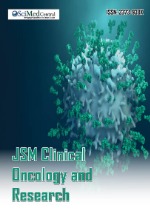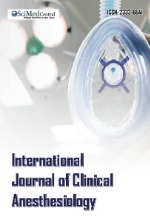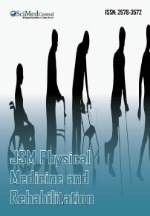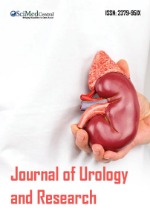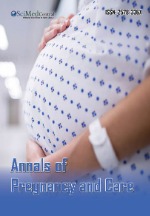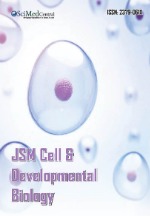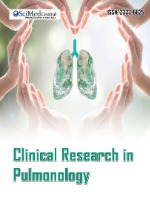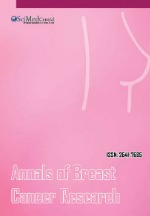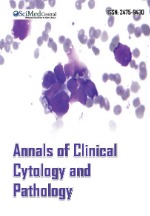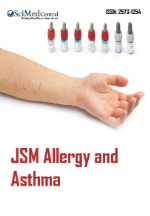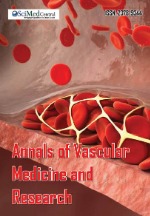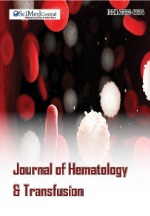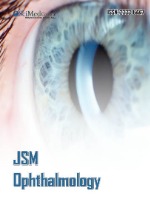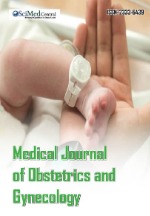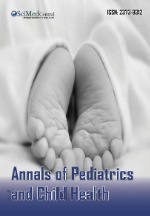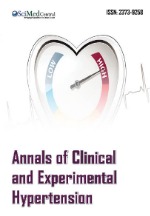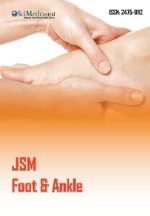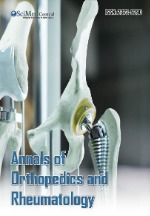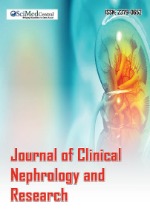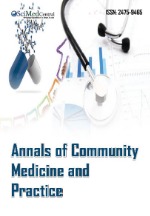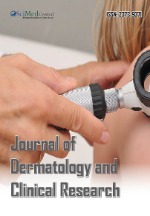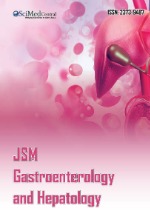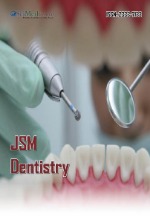Prevalence, Severity and Factors Associated with Low Serum Vitamin D Levels Among Diabetic Foot Ulcer Patients: A Multicenter Investigation in Western Uganda
- 1. Department of Surgery, Kampala International University Western Campus, Uganda
- 2. Department of Clinical Pathology, Kampala International University Western Campus, Uganda
Abstract
Background: Diabetic foot ulcers (DFUs), significantly burden health and socioeconomic systems, primarily due to peripheral neuropathy and uncontrolled glucose levels. Emerging research suggests a link to micronutrient deficiencies, notably vitamin D. Despite hypotheses that vitamin D deficiency impedes DFU healing and worsens outcomes, data on this association in our setting are limited. This study therefore aimed to determine the prevalence, severity, and factors associated with low serum vitamin D levels among DFU patients in Western Uganda.
Methods: In this cross-sectional study, we recruited participants diagnosed with DFUs who exhibited low serum vitamin D levels. The study utilized bedside vitamin D rapid diagnostic tests to assess these levels, alongside evaluating patient characteristics and applying the Wagner classification system to classify DFUs. Data analysis was conducted using Stata version 14.2, with statistical significance defined as p < 0.05.
Results: 109 patients with DFUs were assessed, with 83.5% showing low serum vitamin D levels. Among those with low serum vitamin D levels, Wagner grade 3 ulcers predominated (35.1%). The cohort was predominantly male (72.5%), with a mean age of 58 years; the majority had primary education or lacked formal schooling (74.7%). Additionally, 28.6% reported alcohol use, 24.2% reported smoking, and 68.8% had hypertension. In regression analysis, a history of smoking was associated with low serum vitamin D levels among DFU patients (AOR = 3.168, CI: 1.050-9.561, p = 0.041). A history of having a nephropathy was also associated with low vitamin D levels (AOR=3.630, CI: 1.315-10.02, p=0.01), additionally patients who rarely ate fruits and vegetables were also associated with having low serum vitamin D levels (AOR=3.426, CI: 1.105-10.84, p=0.036), and late Wagner grades of DFUs were associated with low serum vitamin D levels (AOR = 0.187, CI: 0.073-0.478, p < 0.001).
Conclusion: Patients with DFU, particularly those with advanced Wagner grades and who smoke, are at increased risk of vitamin D insufficiency or deficiency. Also, patients who have a nephropathy and those that rarely have fruits or vegetables in their diet have an increased risk of having vitamin D deficiency or insufficiency.
Recommendations: Based on our findings, we recommend regular monitoring of vitamin D levels in DFU patients, particularly smokers, patients with nephropathy and supplementation for those with suboptimal levels
KEYWORDS
- Diabetic Foot Ulcer
- Vitamin D
- Western Uganda
CITATION
Inomu E, Kabuye U, Tajab EMA, Kiswezi A, Mugenyi M (2025) Prevalence, Severity and Factors Associated with Low Serum Vitamin D Levels Among Diabetic Foot Ulcer Patients: A Multicenter Investigation in Western Uganda. JSM Burns Trauma 8(1): 1051.
INTRODUCTION
Diabetic foot ulcers (DFUs), significantly burden health and socioeconomic systems, primarily due to peripheral neuropathy and uncontrolled glucose levels. Emerging research suggests a link to micronutrient deficiencies, notably vitamin D. Despite hypotheses that vitamin D deficiency impedes DFU healing and worsens outcomes, data on this association in our setting are limited. This study therefore aimed to determine the prevalence, severity, and factors associated with low serum vitamin D levels among DFU patients in Western Uganda.
METHODS
Study Design
This investigation implemented a cross-sectional study involving all patients diagnosed with diabetic foot ulcers with low serum vitamin D levels.
Study Site and Setting
This multicenter study was conducted at three hospitals in western Uganda under the Ministry of Health. The study sites included Fort Portal Regional Referral Hospital and Kitagata General Hospital, both government institutions, as well as the private Kampala International University Teaching Hospital. Each of these regional referral hospitals provides specialized diabetic care through dedicated diabetic clinics, surgical departments, and orthopaedic wards.
The diabetic clinics operate on specific days, catering to ambulatory diabetic patients, including those with diabetic foot ulcers. On average, these clinics attend to approximately 20 diabetic patients per week, with around 5 presenting with diabetic foot ulcers. Patients with severe diabetic foot ulcers are typically admitted for more intensive interventions, such as debridement or possible amputation, based on the clinical assessment by the attending healthcare professionals in the surgical wards. These hospitals possess the necessary facilities to conduct a range of laboratory investigations, including the measurement of vitamin D levels.
Target Population
All patients who presented with DFUs at the study centers during the study period
Study Population: All participants aged 18 years and older who presented with DFUs at the study sites during the specified study period.
Inclusion Criteria
All patients aged 18 years and above diagnosed with DFUs with low serum vitamin D levels, specifically defined as below 30 ng/ml.
Exclusion Criteria
Patients receiving oral vitamin D supplementation DFU patients below18 years.
Sample Size and Sample Size Determination
According to the participating hospitals registries, a total of 180 new cases DFU were diagnosed over 6 months. When the anticipated study period of 5months was incorporated, the finite population was 150 new DFU cases.
Using Cochrane’s formula for sample size calculation of finite populations, where N= desired sample size; Z= Standard normal deviate (1.96 for a 95% confidence interval); P= prevalence of low serum vitamin D levels in DFU patients; d= the acceptable error margin (0.05). Since prevalence of low serum vitamin D levels in DFU patients is unknown, P=0.5
N=Z*2P(1-P)/d*2
N=1.96*2 0.5(1-0.5)/0.05*2=385
N=385patients
For finite population correction: n=N/(1+(N-1)/N*) = 385/ (1+(385-1)/150) =109patients
STUDY VARIABLE
The following outcome variables were selected based the existing literature
Primary outcome variables: The primary outcome variable is the prevalence of low serum vitamin D levels.
Secondary outcome variables: The secondary outcome variable encompassed potential covariates hypothesized to correlate with diminished serum vitamin D levels. These covariates included age, gender, comorbidities, smoking status, BMI, and alcohol consumption.
Tertiary outcome variables: The tertiary outcome variables encompassed diabetic foot ulcer severity, measured using the Wagner classification.
Study Procedure
Eligible participants who provided informed consent underwent documentation of demographic and patient characteristics using a pretested and predetermined questionnaire. Subsequently, Wagner grading for diabetic foot ulcers was conducted, wherein Grade 0 signifies healthy skin, Grade 1 indicates the presence of a superficial ulcer, Grade 2 denotes a deep ulcer, Grade 3 signifies a deep ulcer with complications such as abscess or bone involvement, and Grade 4 indicates gangrene. Serum vitamin D levels of the patients were measured using a qualitative technique, and the results were recorded in the questionnaire.
Following the data collection process, patients continued with their routine care.
Data Collection
Data were collected by the principal investigator with the assistance of research assistants, who were doctors on duty in surgical wards and diabetic outpatient clinics. The data collection utilized an administered, pre-tested questionnaire originally designed in English. For participants who did not understand English, the questionnaire was interpreted and translated into local languages understood by the patients.
The data encompassed socio-demographic variables, patient characteristics, severity of the diabetic foot at recruitment, and determination of serum vitamin D levels at the study initiation. Patients were subsequently subjected to routine care.
Collected data were double-entered into Microsoft Excel 2019 and subsequently transferred to STATA version 15.0 for analysis.
Data Quality Control
Rigorous adherence to predefined inclusion and exclusion criteria was consistently upheld throughout the study. The questionnaires underwent meticulous review to ensure the thoroughness and accuracy of the gathered data. Research assistants received comprehensive training and ongoing supervision from the principal investigator and study supervisors to ensure proficient use of data collection instruments and adherence to study protocols.
No restrictions were imposed on concurrent medical care or interventions during the study, thereby permitting necessary medical attention and treatment as warranted.
Data Analysis
The data were initially coded and entered into Excel version 2016, followed by export to Stata 14.2 for subsequent analysis. The prevalence of low serum vitamin D levels among DFU patients was determined by calculating the percentage of individuals with serum vitamin D concentrations below 30 ng/mL relative to the total number of DFU patients included in our study. The severity categories, demographic and clinical characteristics of DFU patients were summarized using frequencies and percentages. Logistic regression was conducted to identify factors associated with low serum vitamin D levels among DFU patients. Variables with a p-value ≤ 0.2 in bivariate analysis were included in multivariate analysis to adjust for potential confounders. Results were reported as odds ratios with 95% confidence intervals. Statistical significance was determined using a p-value threshold of less than 0.05.
RESULTS
The study included 109 patients diagnosed with DFUs with 91 individuals exhibiting low serum vitamin D levels and 18 patients having levels within the normal range, recruited from surgical and outpatient diabetic clinic settings. Serum vitamin D evaluation revealed an average concentration of 20 ng/mL. Over the study period, a total of 109 DFU patients were assessed. Of these, 91 individuals exhibited vitamin D levels ≤ 30 ng/mL, while only 18 patients had levels above this threshold, resulting in a prevalence of 83.5% for vitamin D insufficiency and deficiency among the sampled DFU patient population (Table 1).
Table 1: Prevalence of Low Serum Vitamin D Levels (<30 ng/mL) Among DFU Patients
|
Serum Vitamin D levels |
Frequency(=N/109) |
Percentage (%) |
|
≥ 30ng/ml |
18 |
16.5 |
|
<30ng/ml |
91 |
83.5 |
The majority of patients (n=48, 52.7%), exhibited serum vitamin D levels within the deficient range. The distribution of DFU severity was characterized by a predominance of Wagner grade 3 ulcers (n=32, 35.2%), while Wagner grade 5 represented the smallest proportion (n=3, 3.3%). Notably, patients with more advanced Wagner grades of DFUs showed lower serum vitamin D levels; all Wagner grade 5 patients (100.0%), presented with serum vitamin D concentrations ≤ 10 ng/mL (Figure 1 and Table 2).
Figure 1: Severity of Serum Vitamin D Deficiency Across Different Wagner Grades of DFUs
Table 2: Socio-Demographics and Clinical Characteristics of DFU Patients with Low Serum Vitamin D Levels
|
Variable |
Frequency(n), N=91 |
Percentage (%) |
|
|
Age by category |
|||
|
<50 |
21 |
23.1 |
|
|
50-59 |
23 |
25.3 |
|
|
60-69 |
36 |
39.5 |
|
|
70 and above |
11 |
12.1 |
|
|
Sex |
|||
|
Female |
25 |
27.5 |
|
|
Male |
66 |
72.5 |
|
|
Education level |
|||
|
Primary |
34 |
37.4 |
|
|
Secondary |
3 |
3.3 |
|
|
Tertiary |
20 |
22.0 |
|
|
No-formal education |
34 |
37.3 |
|
|
Marital status |
|||
|
Married |
79 |
86.8 |
|
|
Single |
12 |
13.2 |
|
|
HIV status |
|||
|
No |
83 |
91.2 |
|
|
Yes |
8 |
8.8 |
|
|
Hypertension |
|||
|
No |
23 |
25.3 |
|
|
Yes |
68 |
74.7 |
|
|
History of smoking |
|||
|
No |
69 |
75.8 |
|
|
Yes |
22 |
24.2 |
|
|
History of alcohol consumption |
|||
|
No |
65 |
71.4 |
|
|
Yes |
26 |
28.6 |
|
|
DFU Severity (Wegner classification) |
|||
|
Grade 1 |
22 |
24.2 |
|
|
Grade 2 |
21 |
23.1 |
|
|
Grade 3 |
32 |
35.1 |
|
|
Grade 4 |
13 |
14.3 |
|
|
Grade 5 |
3 |
3.3 |
|
|
Nephropathy |
|||
|
No |
35 |
38.5 |
|
|
Yes |
56 |
61.5 |
|
|
Diet (fruits and vegetables) |
|||
|
Daily |
0 |
0 |
|
|
occasionally |
13 |
14.3 |
|
|
Rarely |
64 |
70.3 |
|
|
Usually, |
14 |
15.4 |
|
|
Carbohydrate |
|||
|
Daily |
80 |
87.9 |
|
|
Occasionally Rarely |
2 0 |
2.2 0 |
|
|
usually, |
9 |
9.9 |
|
|
Protein |
|||
|
Daily |
55 |
60.4 |
|
|
occasionally |
6 |
6.6 |
|
|
Rarely |
1 |
1.1 |
|
|
Usually, |
29 |
31.9 |
|
|
Steroid use |
|||
|
No |
70 |
76.9 |
|
|
Yes |
21 |
23.1 |
|
|
BMI |
|||
|
Underweight |
4 |
4.4 |
|
|
normal |
68 |
74.7 |
|
|
Overweight |
19 |
20.9 |
|
|
Residence |
|||
|
Rural |
81 |
89.0 |
|
|
Urban |
10 |
11.0 |
|
|
DFU (months) |
|||
|
>1 |
11 |
12.1 |
|
|
1-6 |
59 |
64.8 |
|
|
>6 |
21 |
23.1 |
|
This study cohort exhibited a distinct demographic and clinical profile. Predominantly male, comprising 72.5% (n=66) of participants, the mean age was 58 years. The 60–69-year age group represented the most common category at 39.5% (n=36), while individuals aged ≥70 years constituted a relative minority at 12.1% (n=11). Regarding education level, the majority reported primary education or no formal schooling (n=68, 74.7%). In terms of lifestyle factors, approximately a quarter of the cohort disclosed histories of alcohol consumption (n=26, 28.6%) and smoking (n=22, 24.2%). Additionally, hypertension emerged as a highly prevalent comorbidity, affecting 68.8% (n=74) of participants (Table 2).
In the bivariate analysis, late Wagner grades of DFUs were associated with low serum vitamin D levels among DFU patients (COR = 0.199, CI: 0.082-0.485, p < 0.001) (Table 3).
Table 3: Bivariate and Multivariate Analysis of Factors Associated with Low Serum Vitamin D Levels among DFU Patients
|
Variable |
Low serum vitamin D n (%), N=91 |
Bivariate analysis |
Multivariate analysis |
||
|
COR (95%CI) |
P-value |
AOR (95%CI) |
P-value |
||
|
Education level |
|||||
|
Primary |
34(37.4) |
Ref |
|||
|
Secondary |
3(3.3) |
0.808(0.066-9.821) |
0.867 |
0.455(0.042-9.185) |
0.584 |
|
Tertiary |
20(22.0) |
1.615(0.530-4.934) |
0.400 |
1.720(0.542-7.034) |
0.407 |
|
No-formal education |
34(37.3) |
2.046(0.777-5.386) |
0.147 |
2.432(0.877-8.059) |
0.110 |
|
History of smoking |
|||||
|
No |
69(75.8) |
Ref |
|||
|
Yes |
22(24.2) |
2.414(0.896-6.506) |
0.082 |
3.168(1.050-9.561) |
0.041 |
|
Nephropathy |
|||||
|
No |
35(38.5) |
Ref |
|||
|
Yes |
56(61.5) |
2.909(1.196-7.073) |
0.018 |
3.630(1.315-10.02) |
0.013 |
|
Diet (fruits and vegetables) |
|||||
|
Occasionally |
13(14.3) |
Ref |
|||
|
Rarely |
64(70.3) |
0.346(0.096-1.240) |
0.103 |
3.462(1.105-10.84) |
0.036 |
|
Usually |
14(15.4) |
0.333(0.068-1.624) |
0.174 |
0.202(0.034-1.191) |
0.077 |
|
DFU Severity (Wegner classification) |
|||||
|
Early Grades (1&2) |
43(47.3) |
Ref |
|||
|
Late Grades (3,4&5) |
48(52.7) |
2.199(0.082-5.485) |
<0.001 |
2.187(2.273-5.478) |
<0.001 |
To account for potential confounders, all variables with p-values ≤ 0.2 were included in a multivariate analysis. A history of smoking was associated with low serum vitamin D levels among DFU patients (AOR = 3.168, CI: 1.050-9.561, p = 0.041). Additionally, late Wagner grades of DFUs were associated with low serum vitamin D levels (AOR = 0.187, CI: 0.073-0.478, p < 0.001) (Table 3).
DISCUSSION
Participant demographic and clinical characteristics
Our cross-sectional study involved 91 participants with diabetic foot ulcers (DFUs), conducted over a 5-month period across surgical wards and diabetic clinics in five hospitals in Western Uganda.
This study found an average patient age of 58 years, with the largest cohort (39.5%) aged 60–69. This aligns with research from Bulgaria, Iran, the USA, and Greece, where mean ages for DFU patients were 59.1, 59.0, 55.7, and 61.9 years, respectively [1-4].
Additionally, our study revealed a higher prevalence of DFUs among male patients compared to females. This male predominance was consistently observed across the various studies on DFUs that we reviewed [4-6].
The majority of patients were married (79%), and 28.6% reported a history of alcohol consumption. These findings are consistent with Sikhondze’s and Vahwere’s studies, which documented alcohol use in 30.6% and 22.2% of their DFU cohorts, respectively [7,8].
Our cohort had 8.8% of patients either known or newly diagnosed with HIV, which is lower than the 17.7% reported by Sikhondze [7]. This discrepancy may be attributed to variations between the study centers.
Regarding education level, most participants (n=68, 74.7%) had only primary education or no formal schooling. This is consistent with Malik et al.’s study, which reported 74.3% of patients with low or no formal education [9]. This likely reflects a limited understanding of diabetic foot care. Conversely, a Saudi Arabian study found that higher education levels—secondary and university—correlated with better knowledge of diabetic foot care, thereby reducing DFU risk [10].
Additionally, hypertension was a prevalent comorbidity, affecting 68.8% (n=74) of participants.
This high prevalence is consistent with Odusan’s study, which also reported significant hypertension rates among DFU patients [11]. However, it contrasts with the Ethiopian study, which found a 37.8% prevalence [12]. This discrepancy may stem from variations in study populations, healthcare access, diagnostic criteria, or underlying genetic and environmental factors.
In our study, 52.7% of patients had late Wagner grades of DFUs. This is consistent with findings from Mexico and Indonesia, where late Wagner grades were prevalent in 93% and 70% of cases, respectively [13,14]. These studies also identified Wagner grade 3 ulcers as the most prevalent, consistent with our results. However, this contrasts with Sikhondze et al.’s findings, where the majority of patients had grade 2 ulcers (25.8%) [7]. The discrepancy is likely due to the delayed presentation of DFU patients in our cohort, possibly attributed to the asymptomatic nature of early ulcers and the erroneous belief that the wounds would heal spontaneously.
Prevalence of low serum vitamin D levels among DFU patients
The study revealed that 83.5% of DFU patients had either vitamin D insufficiency or deficiency, which closely matches findings by Greenhagen [3], at 78% and [15], at 84.6%. However, this prevalence is lower than the 100% reported by Dai J [16], and Privanto MH [17]. These discrepancies may stem from differences in sample size, geographic location, patient demographics, and study methodologies.
The majority of patients (n=48, 52.7%), exhibited serum vitamin D levels within the deficient range. The distribution of DFU severity was characterized by a predominance of Wagner grade 3 ulcers (n=32, 35.2%), while Wagner grade 5 represented the smallest proportion (n=3, 3.3%). Notably, patients with more advanced Wagner grades of DFUs showed lower serum vitamin D levels; all Wagner grade 5 patients (100.0%), presented with serum vitamin D concentrations ≤ 10 ng/mL (Table 2).
This study cohort exhibited a distinct demographic and clinical profile. Predominantly male, comprising 72.5% (n=66) of participants, the mean age was 58 years. The 60–69-year age group represented the most common category at 39.5% (n=36), while individuals aged ≥70 years constituted a relative minority at 12.1% (n=11). Regarding education level, the majority reported primary education or no formal schooling (n=68, 74.7%). In terms of lifestyle factors, approximately a quarter of the cohort disclosed histories of alcohol consumption (n=26, 28.6%) and smoking (n=22, 24.2%).
Additionally, hypertension emerged as a highly prevalent comorbidity, affecting 68.8% (n=74), of participants, in terms of patients who had documented nephropathy were (n=56, 61.5%), majority of the patients had nephropathy with evidence.
When it comes to diet, majority of the patients rarely ate fruits and vegetables (n=64,70.3%), when it came to carbohydrates, and proteins (n=80,87.9%) and (n=55,60.4%) respectively, had these meals daily, a few of the patients used steroids (n=21,23.1%), and majority of the patients had normal body weight (n=68, 74.7), also majority of the patients were from rural areas (n=81,89%).
When it came to duration of having the diabetic foot ulcers in months, majority of the patients had had the ulcers between 1-6 months duration (n=59,64.8%) (Table 2).
In a study done by Tiwari, he found that Vitamin D deficiency was found in 71.4% of the diabetic foot infection cases,61.6% of the diabetic controls and 48.6% of the healthy volunteers ,however severe deficiency was most common in diabetic foot infections cases than in control and healthy volunteers (48.2,20.5 and 7.6%) respectively [18].
Severity of serum vitamin D deficiency among patients with different Wagner’s grades of DFUs in Western Uganda
The majority of patients (52.7%), had serum vitamin D levels in the deficient range. This contradicts Tsitsou’s findings, where 78.9% of patients with both DFUs and low serum vitamin D levels fell into the insufficient range [4].
Most patients with Wagner grades 1 and 2 had serum vitamin D levels in the insufficient range (>10 ng/ mL), whereas those with Wagner grades 3 and above predominantly had deficient serum vitamin D levels. This aligns with Darlington’s study findings [19].
Patients with late grades of DFU (grade 3,4 &5), were two times more likely to have low levels of Vitamin D levels as compared to those with early grades (1,2), according to the findings in our study.
Factors associated with low serum vitamin D levels among DFU patients
Late Wagner DFUs were associated with lower serum vitamin D levels among DFU patients. This finding is supported by both Dai’s systematic review and meta- analysis, and Tiwari’s study, which indicate a significant decrease in serum vitamin D levels as DFU severity increases [18,20].
Anderson et al., reported that over 50% of their DFU cohort were smokers, which contradicts our finding of a 24.2% smoking rate [21]. However, in our study, smoking was associated with lower serum vitamin D levels. This may be attributed to the disruption of vitamin D metabolism by smoking, thereby reducing its effectiveness in promoting ulcer healing [22].
In a study done by Mohammed Reza et al., a comparison study where he studied two groups of participants, those with diabetic foot ulcers and those without diabetic foot ulcers, he studied the effects of dietary and herbal supplements with anti-oxidant properties on the process of wound healing which showed a positive effect on the wound healing, he also found that vitamin D levels were significantly low in patients with DFU as compared to those without DFU.
These findings align with our study where we found that patients who rarely ate fruits or vegetables were three times more likely to have low vitamin D levels and hence were at a higher risk of developing DFU [23].
According to his study, he stated that wound healing is a complicated process containing four steps: haemostasis, inflammation, proliferation and tissue remodelling. One of the possible mechanisms through which nutrients affect DFU is reducing free radicals and oxidative parameters, and hence eating vegetables and fruits is protective.
In a comparison study done by Priyanto in India, he found that vitamin D decreases pro inflammatory cytokines and increases anti-inflammatory responses. He also noted that longer duration of DFU and vitamin D deficiency had a significantly negative effect on the rate of DFU healing, this aligns with our study which noted that duration of DFU was not significant and had no effect on levels of vitamin D in blood [17].
Patients with nephropathy were 3.6 times more likely to have low serum vitamin D levels as compared to their counterparts without nephropathy from our study, however this conflicts with a study done by Ying Xiao in China where he found that the correlation between vitamin D deficiency and nephropathy was not statistically significant, this could have been probably due to the differences in the study population and the covariates included in the regression analyses.
DECLARATIONS
Acknowledgements
We thank John Oryem for his help with data collection and consented for his name to be published
Authors” contributions
E.I. served as the Principal Investigator, leading the study’s design, literature review, data collection, analysis and manuscript review. U.K. wrote, analyzed data and critical reviewed the manuscript. M.M., E.M.A.T., and A.K. provided critical manuscript reviews. All authors read and approved the final manuscript
Human Ethics and Consent to Participate
This study was performed in accordance with the Declaration of Helsinki and all methods were performed in accordance with the relevant guidelines and regulations. Ethical approval was granted by the Bishop Stuart University Research and Ethics committee and all participants and or their legally authorized representatives signed an informed consent form prior recruitment into the study.
Availability of data and materials
All materials are accessible to any scientist seeking non-commercial utilization, without breaching the confidentiality of participants from the corresponding authors on reasonable request.
REFERENCES
- Todorova AS, Edward BJ, Rumyana BD, Nevena YC, Mina SS, Greta GG, Polina VT, et al. Vitamin D Status in a Bulgarian Population With Type 2 Diabetes and Diabetic Foot Ulcers. Int J Low Extrem Wounds. 2022; 21: 506-512.
- Afarideh M, Ghanbari P, Noshad S, Ghajar A, Nakhjavani M, Esteghamati A. Raised serum 25-hydroxyvitamin D levels in patients with active diabetic foot ulcers. Br J Nutr. 2016; 115: 1938-1946.
- Greenhagen RM, Frykberg RG, Wukich DK. Serum vitamin D and diabetic foot complications. Diabet Foot Ankle. 2019; 10: 1579631.
- Tsitsou S, Dimosthenopoulos C, Eleftheriadou I, Andrianesis V, Tentolouris N. Evaluation of Vitamin D Levels in Patients With Diabetic Foot Ulcers. Int J Low Extrem Wounds. 2023; 22: 27-35.
- Ignatovich IN, Kondratenko GG, Dobrovol’skaia IV. [Low level of 25-OH-vitamin D as a marker of critical ischemia in case of diabetic foot syndrome]. Khirurgiia. 2014; 3; 11-14.
- IDF, Idf diabetes atlas, 9TH ed. 2019.
- Sikhondze MM, Twesigye D, Odongo CN , Mutiibwa D, Tayebwa E, Tibaijuka L, et al. Diabetic Foot Ulcers: Surgical Characteristics, Treatment Modalities and Short-Term Treatment Outcomes at a Tertiary Hospital in South-Western Uganda. Open Access Surg. 2022; 15: 75-87.
- Vahwere BM. Factors associated with severity and anatomical distribution of diabetic foot ulcer in Uganda: a multicenter cross- sectional study. BMC Public Health. 2023; 23: 1-14.
- Malik SE, Kanwal S, Javed J, Naeem H, Jehandad Z, Haider I. Association of Level of Education and Occupation With Diabetic Foot Ulcer in Patients With Type 2 Diabetes Mellitus. J Med Sci. 2023; 31: 295-300
- Alshammari ZJ, Alsaid LA, Parameaswari PJ, Alzahrani AA. Attitude and knowledge about foot care among diabetic patients in Riyadh, Saudi Arabia. J Fam Med Prim. 2019; 8: 2089-2094.
- Odusan O, Amoran OE, Salami O. Diabetic foot ulcer: risk factors among patients of a secondary healthcare facility in south west Nigeria. Ghana Med J 2018; 52: 222.
- Tola A, Regassa LD, Ayele Y. Prevalence and associated factors of diabetic foot ulcers among type 2 diabetic patients attending chronic follow-up clinics at governmental hospitals of Harari Region, Eastern Ethiopia: A 5-year (2013–2017) retrospective study. SAGE Open Med. 2021; 9: 2050312120987385.
- Cervantes-García E, Salazar-Schettino PM. Clinical and surgical characteristics of infected diabetic foot ulcers in a tertiary hospital of Mexico, Diabet. Foot Ankle. 2017; 8: 1367210.
- Pemayun TGD, Naibaho RM. Clinical profile and outcome of diabetic foot ulcer, a view from tertiary care hospital in Semarang, Indonesia, Diabet Foot Ankle. 2017; 8: 1312974.
- Feldkamp J, Jungheim K, Schott M, Jacobs B, Roden M. Severe Vitamin D3 Deficiency in the Majority of Patients with Diabetic Foot Ulcers. Horm Metab Res. 2018; 50: 615-619.
- Dai J, Yu M, Chen H, Chai Y. Association Between Serum 25-OH- Vitamin D and Diabetic Foot Ulcer in Patients With Type 2 Diabetes. Front Nutr. 2020; 7: 1-5.
- Priyanto MH, Legiawati L, Saldi SRF, Yunir E, Miranda E. Comparison of vitamin D levels in diabetes mellitus patients with and without diabetic foot ulcers: An analytical observational study in Jakarta, Indonesia. Int Wound J. 2023; 20: 2028-2036.
- Tiwari S, Pratyush DD, Gupta SK, Singh SK. Vitamin D deficiency is associated with inflammatory cytokine concentrations in patients with diabetic foot infection. Br J Nutr. 2014; 112: 1938-1943.
- Darlington CJD, Kumar SS, Jagdish S, Sridhar MG. Evaluation of serum vitamin D levels in diabetic foot infections: A cross-sectional study in a tertiary care center in South India. Iran J Med Sci. 2019; 44: 474- 482.
- Dai J, Jiang C, Chen H, Chai Y. Vitamin D and diabetic foot ulcer: a systematic review and meta-analysis. Nutr. Diabetes. 2019; 9: 4-9.
- Anderson JJ, Boone J, Hansen M, Spencer L, Fowler Z. A comparison of diabetic smokers and non-smokers who undergo lower extremity amputation: a retrospective review of 112 patients. Diabet Foot Ankle. 2012; 3: 19178.
- Yang L, Zhao H, Liu K, Wang Y,Liu Q, Sun T, et al. Smoking behavior and circulating vitamin D levels in adults: A meta-analysis. Food Sci Nutr. 2021; 9: 5820-5832.
- Stanaway JD. Global, regional, and national comparative risk assessment of 84 behavioural, environmental and occupational, and metabolic risks or clusters of risks for 195 countries and territories, 1990-2017: A systematic analysis for the Global Burden of Disease Stu. Lancet. 2018; 392: 1923-1994..



